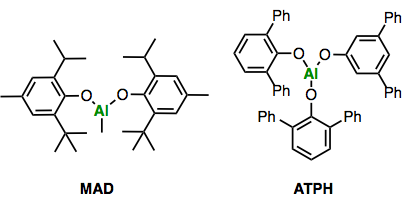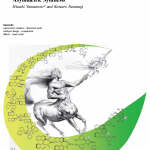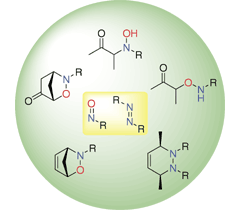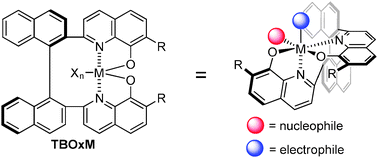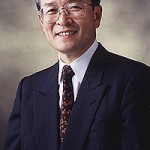Hisashi Yamamoto (born in 1943) is organic chemist in Japan. He is currently director of Molecular Catalyst Research Center at Chubu University.
He was born in Kobe, Japan. He received his Bachelor from Kyoto University under the supervision of Professors H. Nozaki and R. Noyori and Ph. D. from Harvard University under the mentorship of Professor E. J. Corey. His first academic position was as Assistant Professor and lecturer at Kyoto University, and in 1977 he was appointed Associate Professor of Chemistry at the University of Hawaii. In 1980 he moved to Nagoya University where he became Professor in 1983. In 2002, he moved to United States as Arthur Holly Compton Distinguished Service Professor at the University of Chicago. In 2012, he moved back to Japan as director of Molecular Catalyst Research Center at Chubu University.
- Education and Experience
1967 B.Sc. Kyoto University
1971 Ph. D. Harvard University
1972 Kyoto University, Assistant Professor
1977 The University of Hawaii, Associate Professor
1980 Nagoya University, Associate Professor
1983 Nagoya University, Professor
2002 The University of Chicago, Professor
2012 Director of Molecular Catalyst Research Center at Chubu University
- Awards and Honors
1977 The Chemical Society of Japan Award for Young Chemist
1988 Organic Reaction Lecturer
1988 IBM Science Award
1991 Houkou Award
1992 Chunichi Award
1993 Prelog Medal
1994 Merck-Schuchardt Lectureship
1995 The Chemical Society of Japan Award
1997 Toray Science and Technology Award
1998 Max-Tishler Prize
2002 Le Grand Prix de la Fondation Maison de la Chimie
2002 Tetrahedron Chair
2002 National Prize of Purple Medal (Japan)
2003 Fellow of AAAS
2003 Molecular Chirality Award
2006 Tetrahedron Prize
2007 Japan Academy Prize
2007 Humboldt Research Award
2008 Honorary Member of the Chemical Society of Japan
2008 Honorary Fellow of the Chemical Research Society of India
2009 ACS Award for Creative Work in Synthetic Organic Chemistry
2009 Grand Prize of Synthetic Organic Chemistry of Japan
- Research
During his research career over three decades, the research group of Yamamoto has developed a wide range of new reagents and reactions. In particular, his research laid the foundation for modern designer Lewis and Brønsted acid chemistry. His group has invented many methods for carbon-carbon bond formation, for constructing various ring system, for interconversion of functional groups, for controlling relative and absolute stereochemisry, and for efficient synthesis of natural and unnatural products. His current interests are mainly development of new synthetic reactions in the filed of acid catalysis including designer Lewis and Brønsted acids, and combination of these two acid systems targeting more versatile, more selective, and more reactive catalysts, aiming at environmentally benign systems.
His research in the area of organoaluminum chemistry has had a great impact on synthetic organic chemistry. The strong Lewis acidity of organoaluminum compounds appears to account for their strong tendency to form a stable 1:1 complex. Thus, the coordination of molecules invariably causes a change of reactivity, and the coordinated group may be activated or deactivated depending upon the type of reaction. Furthermore, with coordination of organic molecules an auxiliary bond can become coupled to the reagent and promote the desired reaction. In short, the reagents make a combined Lewis acid – Lewis base attack on a substrate with less activation energy, a field opened by Yamamoto’s early and highly original studies. His aluminum amide reagents for epoxide rearrangement, biogenetic-type terpene synthesis, and the Beckmann rearrangement-alkylation reaction sequence are notable examples.
He was intrigued by the chemistry of the carbonyl compound-Lewis acid complex and introduced the unusually bulky organoaluminum reagents, methylaluminum bis(2,6-di-tert-butyl-4-methylphenoxide) (MAD) and aluminum tris(2,6-diphenylphenoxide) (ATPH).[1] These reagents were successfully utilized for the selective alkylation of cyclic ketones and aldehydes to generate equatorial alcohol and an anti-Cram type product, respectively, for trans- and cis-selective Claisen rearrangement, for regioselective Diels-Alder reaction, and for epoxide-aldehyde rearrangement. The ATPH – aromatic carbonyl complex reacts with nucleophiles selectively at the para-position of the aromatic ring to generate cyclohexadiene derivatives.
After these pioneering researches in Lewis acid chemistry, Yamamoto has become aware of the vast importance of chiral Lewis acids in modern asymmetric synthesis. In 1985, he first introduced binaphthol as a key ligand for chiral Lewis acid catalysts.[2] This work was the forerunner of a vast quantity of present-day research on the binaththol based chiral Lewis acid catalyst. Based on his knowledge of organoaluminum chemistry, he designed a new and powerful organoaluminum catalyst for asymmetric hetero-Diels-Alder reaction. It was his Brønsted acid-Lewis acid combined system, however, which gave him a unique opportunity for the most efficient asymmetric Lewis acid catalyst for Diels-Alder reaction. A similar concept was employed for his catalytic asymmetric protonation under acidic conditions, which now creates a long sought proton induced asymmetric polyene cyclization.
His discovery of tartaric acid based catalyst (CAB catalyst) and amino acid based catalyst led to the first enantioselective Diels-Alder reaction of a broad range of dienes and dienophiles.[3] The same catalyst was shown to be the first highly efficient catalyst for asymmetric aldol and ene type reactions. The reaction is simple, exceedingly stereoselective, and environmentally friendly.
Direct condensation of carboxylic acids by alcohols or amines is the most important transformation of organic synthesis. Yamamoto found Lewis acid catalyst could play an important role for such esterification and amidation processes. For example, his new hafnium catalyzed esterification and boron catalyzed amidation are now becoming increasingly important to the chemical industry.
More recently, he has developed new asymmetric oxidation processes based on an acid catalysis concept. His nitroso chemistry offers an entirely new access to selective organic synthesis and provides catalytic enantioselective reaction to introduce oxygen and/or nitrogen into the molecule.[4] His pyridine based nitroso- and azo-hetero-Diels-Alder provides powerful tool for asymmetric synthesis. He also recently reported asymmetric epoxidation of homoallylic alcohols based on new vanadium catalyst, one of the most difficult asymmetric oxidations to date.
After moving to Chicago, he proposed the use of 8-hydroxyquinole based chiral Lewis acid catalysis.[5] The catalyst is designed as a rigid metal complex of cis-b-configuation. The reagent turned out to be a brand-new “privileged ligand” for asymmetric synthesis. Catalytic asymmetric pinacol coupling, NH reaction, Mukaiyama-Michael addition, and Pudovik reactions are now able to proceed with complete enantioselectivities.
His laboratory is also noted for its introduction of metal reagents that allow highly selective SN2 cross coupling with carbonyl and allylic electrophiles. Allylic organobarium reagent, so-called “Yamamoto’s reagent”, reacts with a variety of electrophiles selectively at less substituted termini with complete stereospecificity, resolving a long-standing problem in terpene synthesis.
- Representative Publications
[1] (a) Yamamoto, H.; Maruoka, K. Pure & Appl. Chem. 1988, 760, 21. (b) Yamamoto, H.; Saito, S. Pure & Appl. Chem. 1999, 71, 239. [PDF]
[2] Yamamoto, H.; Futatsugi, K.; Angew. Chem. Int. Ed., 2005, 44, 1924. DOI: 10.1002/anie.200460394
Lewis and Brønsted acids can be utilized as more-effective tools for chemical reactions by sophisticated engineering (“designer acids”). The ultimate goal of such “designer acids” is to form a combination of acids with higher reactivity, selectivity, and versatility than the individual acid catalysts. One possible way to take advantage of such abilities may be to apply a “combined acids system” to the catalyst design. The concept of combined acids, which can be classified into Brønsted acid assisted Lewis acid (BLA), Lewis acid assisted Lewis acid (LLA), Lewis acid assisted Brønsted acid (LBA), and Brønsted acid assisted Brønsted acid (BBA), can be a particularly useful tool for the design of asymmetric catalysis, because combining such acids will bring out their inherent reactivity by associative interaction, and also provide more-organized structures that allow an effective asymmetric environment.
[3] (a) Furuta, K.; Miwa, Y.; Iwanaga, K.; Yamamoto, H. J. Am. Chem. Soc. 1988, 110, 6254. DOI:10.1021/ja00226a055 (b) Ishihara, K.; Gao, Q.; Yamamoto, H. J. Am. Chem. Soc. 1993, 115, 10412. DOI: 10.1021/ja00075a088
[4] Yamamoto, H., M. Kawasaki, Bull. Chem. Soc. Jpn., 2007, 80, 595. DOI: 10.1246/bcsj.80.595
The catalytic enantioselective oxidation is an extremely important process in organic synthesis and numbers of effort to improve this process have been reported so far. Although nitroso and azo compounds are attractive tools for hydroxylation and amination of organic compounds, no reports on a catalytic asymmetric version of these reactions had been reported until recently. The main issues were their high and unique reactivities. In this review, we would like to introduce the recent advances in this area.
[5] Abell, J.P.; Yamamoto, H. Chem. Soc. Rev. 2010, 39, 61. DOI:10.1039/B907303P
The tethered bis(8-quinolinolato) metal (TBOxM) complexes have found practical use in many asymmetric reactions. The development of highly enantioselective reactions using TBOxM is surveyed. General reaction schemes and examples using these highly active and selective catalysts are given and discussed in this tutorial review.
- Gallery
- Related Books
[amazonjs asin=”3527305084″ locale=”US” title=”Main Group Metals in Organic Synthesis”][amazonjs asin=”3540209832″ locale=”US” title=”Comprehensive Asymmetric Catalysis”][amazonjs asin=”3642059015″ locale=”US” title=”Comprehensive Asymmetric Catalysis: Supplement 2″][amazonjs asin=”3527317244″ locale=”US” title=”Acid Catalysis in Modern Organic Synthesis”][amazonjs asin=”B00D8GA6M0″ locale=”US” title=”Comprehensive Chirality: 9 Volume Set”]


